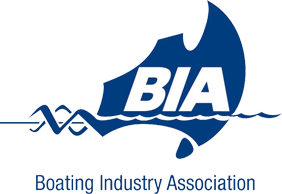Basic Standing Rigging Terms Every Yacht Owner Should Know
08 July 2021Sailing activities can offer tons of health benefits to sailboat owners like you. For one, they can effectively improve your cardiovascular health given the processes that need to be done when preparing and maneuvering the sailboat. Your muscle strength is likewise expected to increase since you will be pulling lines, hoisting, and trimming sails. Another great health benefit of sailing is that it can keep your bones and mental health strong and sound. Even your concentration can improve with sailing.
One more associated health benefit of conducting sailing activities is reduced stress. But your stress levels will only remain low if you are already familiar with the terms related to modern mast and rigging. To help you out, here are some basic terms that you should know about.
Mast
The mast of your sailboat is technically grouped into several panels, which are all numbered from the deck upwards. The first panel can be found between the deck and the first group of spreaders, while the second panel is located between the first and second groups of spreaders. Spreaders, alternatively, are also numbered and can be grouped between port and starboard. The mast tube geometry, alongside any information about the standing rigging, loads from the sail, and material specifications, can all help in designing the geometry of the mast and rigging.
Standing Rigging
Standing rigging is basically comprised of fixed lines, wires, or rods that are intended to support the mast. This specific component has structural stays that can be divided into forestay, backstay, and lateral rigging or side shrouds.
Forestay
The forestay is a standing rigging component that prevents the mast from falling backwards. One end of this component is often connected at the very top portion of the mast, while the other end is situated on the bow of the boat. This standing rigging component can be made from stainless steel wire, solid stainless-steel rod, carbon rod, or natural fibers.
Backstay
The backstay, alternatively, is a standing rigging component that stretches from the top of the mast down to either its rear quarter or transom. This component counteracts the forestay and jib. This specific component can be adjusted through block and tackle, hydraulic adjusters, or lines that lead to winches to suit different sailing conditions.
Shrouds
Shrouds are components of standing rigging that brace the mast from side to side and help to hold it up. Some of them are often connected at the top of the mast, while others are connected halfway down the mast. Some shrouds are categories as continuous and dis-continuous, continuous is were the shroud terminates up the mast and passes through the spreader ends and terminates at deck level, most commonly in a turnbuckle. Dis-continuous shrouds terminate at spreaders in various ends and swages at the spreaders at one end and are most commonly connected with pins.
Tangs
Tangs are standing rigging attachment points that are located on the mast, deck or spreaders. To date, there are various types of tangs that standing rigging can have. Some of these types include the forestay tang and the cap tang. These fittings are utilised to connect standing rigging to the hull or a spar.
To find out more about mast and rigging, feel free to give us a call at Riggtech.
Optimized by: Netwizard SEO


